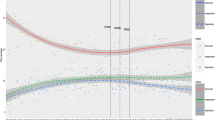Abstract
How do Latinos gain local political power, given their demographic proportions and characteristics in a community's population? This paper examines the influences of population structure, socioeconomic factors, and residential patterns on the process by which Latinos have translated their numbers into an effective political presence in five California cities. The distinctive routes to empowerment evidenced in these cities reveal the varied possibilities local demographic settings may offer and the sensitivity of different election systems to those settings. Two alternatives are considered: (1) a change from election at large to election by single-member district, or (2) augmentation of Latinos' citywide voting strength in deciding the second- or third-place winner in a multi-member at-large election format. The findings can inform local districting efforts planned around the 2000 census. Their implications extend more broadly to courts applying laws intended to safeguard minority voting rights; and to public policies aimed at balancing interests that unify a community and those that may divide its members.
Similar content being viewed by others
References
Abrahamse, A.F., Morrison, P.A. & Bolton, N.M. (1994). Surname analysis for estimating local concentration of Hispanics and Asians, Population Research and Policy Review13: 383–398.
Allen, J.P. & Turner, E. (1996). Spatial patterns of immigrant assimilation, Professional Geographer48(2): 140–155.
Avey, M.J. (1989). The demobilization of American voters: A comprehensive theory of voter turnout. New York: Greenwood.
Clark, W.A.V. & Morrison, P.A. (1995). Demographic foundations of political empowerment in multiminority cities, Demography32(2): 183–201.
De la Garza, R.O. DeSipio, L. (1993). Save the baby, change the bathwater, and scrub the tub: Latino electoral participation after seventeen years of Voting Rights Act coverage, Texas Law Review71: 1479–1539.
De la Garza, R.O., et al. (1992). Latino voices: Mexican, Puerto Rican, and Cuban perspectives on American politics. Boulder, CO: Westview Press.
De la Garza, R.O., et al. (1994). Barrio ballots: Latino politics in the 1990 elections. Boulder, CO: Westview Press.
Dixon, R.G., Jr. (1968). Democratic representation: Reapportionment in law and politics.New York: Oxford University Press.
Frey, W.H. & Farley, R. (1996). Latino, Asian, and Black segregation in US metropolitan areas: Are multiethnic metros different?, Demography33(1): 35–50.
Guinier, L. (1993). The representation of minority interests: The question of single-member districts, Cardozo Law Review14: 1135–1174.
Guinier, L. (1994). The tyranny of the majority: Fundamental fairness and representative democracy. New York: Free Press.
Hagen, M.G. & Wolfinger, R.E. (1988). Voter turnout in California, 1974–1986 (mimeo).
Horowitz, D.L. (1992a). Electoral participation among Latino-Americans in El Centro, California (mimeo).
Horowitz, D.L. (1992b). Electoral participation among Mexican-Americans in Dinuba, California (mimeo).
Morrison, P.A. (1991). Demographic and socioeconomic analysis of Oxnard, California (unpublished).
Morrison, P.A. (1992). Demographic analysis of the city of Dinuba, California (unpublished).
Morrison, P.A. (1993a). Demographic analysis of El Centro elementary school district (unpublished).
Morrison, P.A. (1993b). Demographic analysis of Santa Maria, California (unpublished).
Morrison, P.A. (1994a). Empowered or disadvantaged? Applications of demographic analysis to political redistricting, chapter in Hallie Kintner et al. (eds.), Demographics: A casebook for business and government. Boulder, CO: Westview Press.
Morrison, P.A. (1994b). Supplemental report on Santa Maria (unpublished).
Morrison, P.A. (1995a). Report for trial on city of Santa Maria (unpublished).
Morrison, P.A. (1995b). Demographic perspectives on the Voting Rights Act. Santa Monica: RAND, Publication No. P-7905.
Passel, J.S. & Word, D.L. (1980). Constructing the list of Spanish surnames for the 1980 census: An application of Bayes’ Theorem. Paper presented at the 1990 Population Association of America meetings, Denver.
Skerry, P. (1993). Mexican Americans: The ambivalent minority. New York: Free Press.
Skerry, P. (1996). Many American dilemmas: The statistical politics of counting by race and ethnicity, The Brookings Review14(3): 36–39.
Thernstrom, A.M. (1987). Whose votes count? Affirmative action and minority voting rights. Cambridge, MA: Harvard University Press.
Uhlaner, C.J., et al. (1987). Political participation of ethnic minorities in the 1980s. California Institute of Technology, Division of Humanities and Social Sciences, Social Science Working Paper 647.
US Bureau of the Census (1980). Spanish surname list (machine-readable data file) and technical documentation prepared by the Bureau's Data User Services Division.
US Bureau of the Census (1997). Results of the 1996 Race and Ethnic Targeted Test. Population Division Working Paper No. 18. Washington, DC.
Wolfinger, R.E. & Rosenstone, S.J. (1980). Who votes?New Haven, CT: Yale University Press.
Author information
Authors and Affiliations
Rights and permissions
About this article
Cite this article
Morrison, P.A. Demographic influences on Latinos' political empowerment: Comparative local illustrations. Population Research and Policy Review 17, 223–246 (1998). https://doi.org/10.1023/A:1005914503677
Issue Date:
DOI: https://doi.org/10.1023/A:1005914503677




